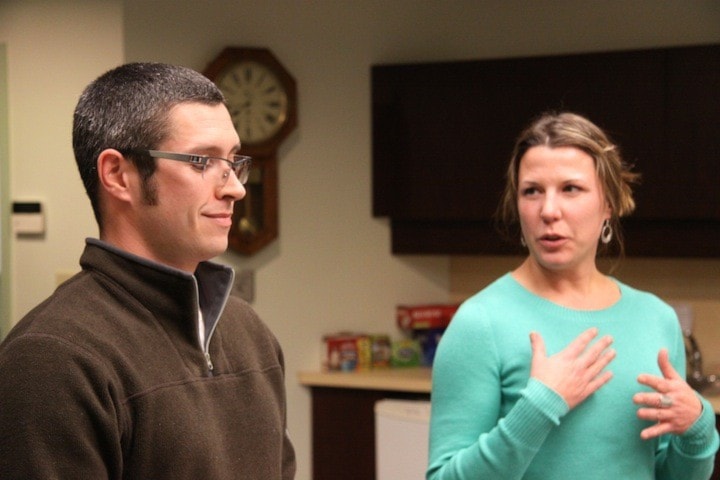A noxious weed so hardy that its roots can push through asphalt, concrete, brick, and building foundations has been found in 60 places in and around Nelson.
A inventory conducted by the non-profit Central Kootenay Invasive Plant Committee discovered invasive knotweed throughout the city and on both sides of the lake.
“It’s a sightline problem for the Ministry of Transportation. It takes over huge areas. It does a lot of property damage,” program technician Matt Chilakos told city council last week as the committee delivered its final report on the Not-A-Weed project.
 Knotweed has a similar appearance and structure to bamboo and can grow up to three meters deep, five meters tall, and 20 meters wide.
Knotweed has a similar appearance and structure to bamboo and can grow up to three meters deep, five meters tall, and 20 meters wide.
However, it has no ecological value locally and has been known to crowd out native vegetation, limit plant and species diversity, and obscure road signs and railway signals. As it can survive in water, it threatens to erode shorelines and degrade aquatic habitat.
Chilakos explained knotweed has to be dealt with from its roots, and even the tiniest amount can reproduce. It can be managed mechanically by cutting it down every two weeks during growing season for up to five years or with herbicides via a stem injection.
The study found dozens of knotweed sites — more than a third of them around Mountain Station — and Chilakos said there are probably more, as he didn’t look at back alleys. The patches he found ranged in size from one meter to 45 meters. Although both Giant and Japanese knotweed varieties were located, the bulk of it was the latter.
The inventory recorded species, size, and location of infestation and assigned a priority rating to each. Chilakos communicated directly with owners of high priority sites, and provided information packages to everyone else.
While some sites were “well-kept and controlled gardens of knotweed,” most were uncontrolled and posed some threat of spreading.
“Of the landowners that were talked to directly, only one actually knew what they had in their garden,” the report states. “The majority of the landowners who had infestations on their properties had very little knowledge or information no the plant, and were at a loss as to how to get rid of it.”
Some landowners bought their properties with the plant already established on it. Several were manicuring it as a fence line or privacy screen. In one case, an owner was letting others take cuttings to grow it on their own properties, posing a high risk of spread throughout the region.
However, the report adds: “With continuous education of the citizens of Nelson, it is possible to reduce the occurrences of mistaken identity and prevent the spread of this invasive plant. Overall, landowner response to outreach activities was very positive.”
 Several owners asked for information on treatment and disposal, and one removed all plant parts and contaminated soil.
Several owners asked for information on treatment and disposal, and one removed all plant parts and contaminated soil.
Central Kootenay Invasive Plant Committee executive director Crystal Klym said financial help isn’t available to property owners who face knotweed infestations.
“Unfortunately, there isn’t a lot of support other than education and awareness,” she said. “If the landowner is adjacent to a Ministry of Transportation right-of-way, expenses can sometimes be shared. But if it’s fully on private land, there is no support.”
However, Klym added there are things local government can do. The report recommends providing realtors, property managers, and homeowners with information about knotweed and developing an invasive species management plan.

